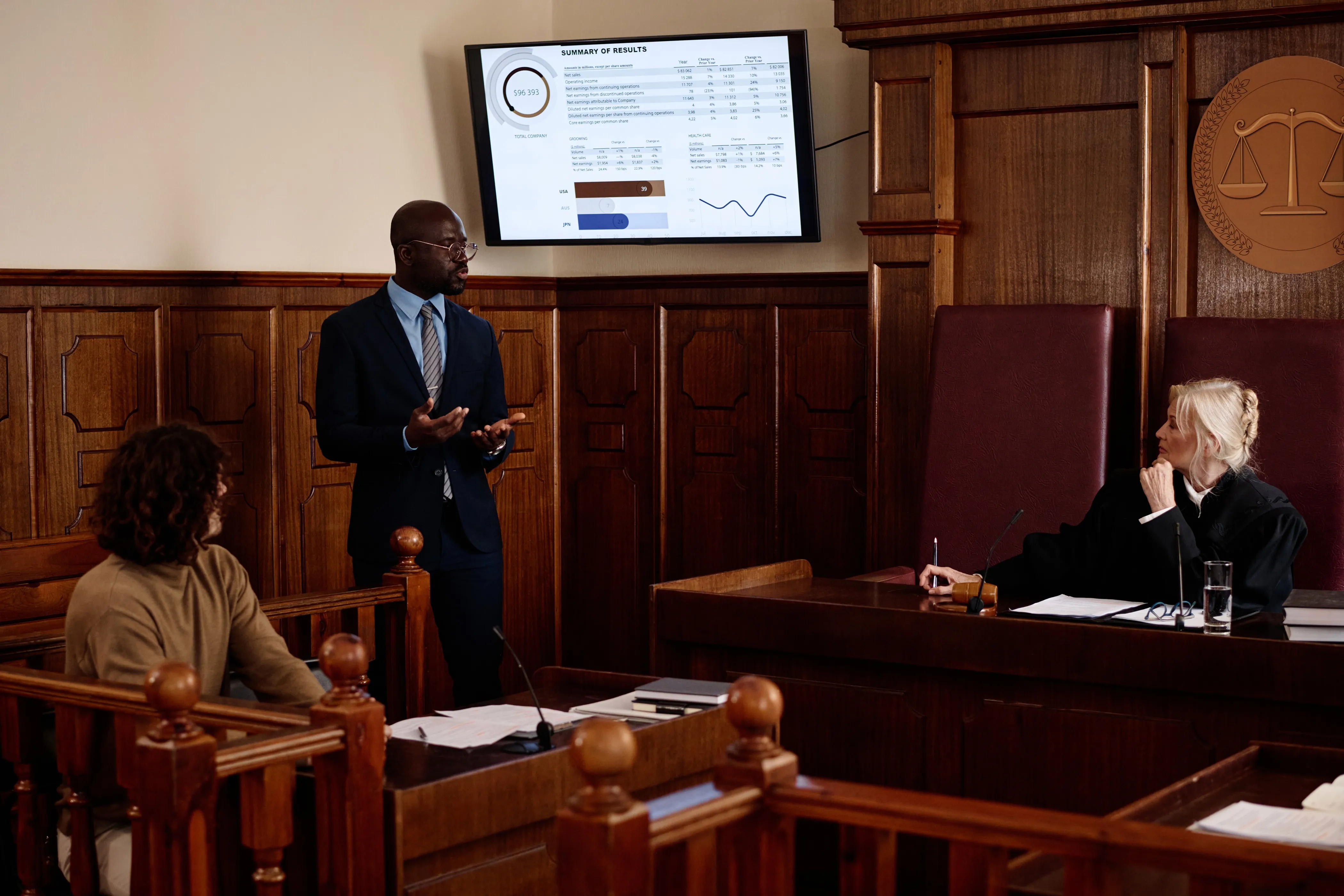
Simulated Courtroom Environments: Bridging Theory and Practice in Legal Education
Simulated courtroom environments are transforming how legal education is delivered, offering students the chance to experience the realities of courtroom proceedings before ever stepping into a real trial. These environments blend traditional legal theory with practical, technology-driven training, preparing the next generation of legal professionals to navigate complex modern courtrooms with confidence.
CTI specializes in creating advanced audiovisual systems for simulated courtroom environments, ensuring that legal training spaces replicate the technical sophistication and procedural dynamics of contemporary trials. Through expertly designed AV integration, we help institutions bridge the critical gap between classroom learning and real-world application.
The Evolution of Legal Training Through Simulation
Legal education has historically been rooted in theoretical study and moot court exercises. While valuable, these methods often lacked the full sensory and procedural immersion needed to thoroughly prepare students for litigation. Simulated courtroom environments solve this problem by providing fully functional mock courtrooms that mirror the technological, acoustic, and procedural aspects of real courtrooms.
By practicing in these realistic settings, students build familiarity with courtroom processes, learn to handle evidence presentation technologies, and develop the critical thinking skills necessary for live trials. Exposure to the tools and workflows used in actual courtrooms boosts confidence and accelerates the transition from academic study to professional practice.
CTI’s simulated courtroom environments solutions are designed to bring this level of training to life, combining intuitive technology with immersive design.
Essential Technologies for Effective Simulations
A high-quality simulated courtroom integrates multiple systems to replicate authentic proceedings. Audio clarity is vital, requiring professional-grade microphones, sound reinforcement, and acoustic design. Every word must be heard clearly, just as it would be in a real courtroom.
Visual systems are equally critical. Large displays, confidence monitors, and evidence presentation stations ensure that participants can introduce exhibits and multimedia elements seamlessly. Video conferencing systems provide the ability to simulate remote witness testimony or hybrid trials.
Recording capabilities enhance training by allowing participants and instructors to review trial simulations, assess performance, and focus on continuous improvement. All systems must be easy to operate through centralized, user-friendly control panels to ensure that the focus remains on learning, not troubleshooting technology.
If you are considering upgrading your training facility, visit CTI’s simulated courtroom environments page to learn more about our customized solutions.
Challenges in Building Realistic Mock Courtrooms
One of the biggest challenges in creating simulated environments is balancing complexity with usability. Systems must mimic the sophistication of real courtrooms but remain accessible to students and instructors without extensive technical training.
Another important consideration is adaptability. As courtroom technology evolves, educational setups must remain flexible to incorporate new standards such as remote testimony platforms, real-time transcription services, and evidence management systems.
CTI overcomes these challenges by designing modular, scalable systems that provide authentic experiences today while leaving room for future enhancements. Our approach ensures that simulated courtroom environments stay relevant as legal practices continue to evolve.
Emerging Trends Influencing Simulated Courtrooms
The future of legal training is being shaped by emerging trends in courtroom technology. Hybrid trials, in which some participants appear remotely, are now common in real-world litigation and are influencing how mock courtrooms are designed. Integrating high-quality video conferencing systems into simulated environments allows students to experience these scenarios firsthand.
A recent AVNation article explores how educational institutions are embracing hybrid and remote learning technologies to stay ahead. These innovations directly apply to legal training, where remote access and virtual trials are becoming integral components of practice.
Another trend is the use of AI analytics to enhance training outcomes. Systems that can track participant speech patterns, analyze courtroom interactions, and provide objective feedback are beginning to appear in simulated courtrooms, offering new ways to measure and improve student performance.
Partnering with the Right AV Integration Team
Developing a successful simulated courtroom requires more than just installing equipment. It demands a thoughtful approach that combines deep knowledge of AV systems with an understanding of legal training requirements.
CTI’s experience in simulated courtroom environments ensures that every element, from sound quality to display clarity to system control, is expertly designed and seamlessly integrated. Our turnkey services include consultation, design, installation, and ongoing support, delivering complete, future-proof solutions that meet the demands of legal education.
If you are ready to create a cutting-edge legal training facility, visit CTI’s simulated courtroom environments page to see how we can help bring your vision to life. Contact us today to start building a space where theory meets practice and students prepare for real-world success.
Talk to Us About Your Project
Too busy to chat right now?
Send us a message.

